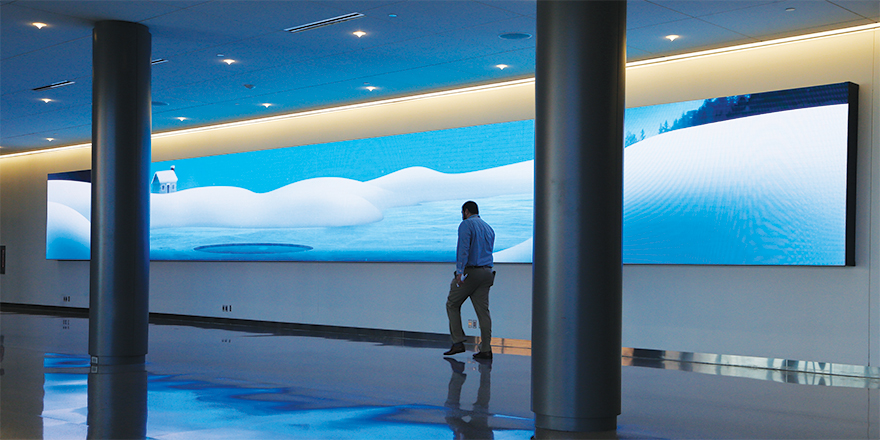By Dan Smith
Head of Business Development
LG Business Solutions USA
LED Signage display technology is a constantly evolving area in the tech world, with historical obstacles (things like cost, ordering complexity, visual performance and user experience) being changed through design innovations. In our previous post we addressed cost and ordering complexity. Today we’ll cover how recent advancements have elevated visual performance and the user experience.
VISUAL PERFORMANCE – The core of the video wall experience is visual impact, and LED Signage walls now have higher resolutions, ever-widening color gamuts and better contrast capabilities. With the advent of mass-produced sub-1mm pixels, LED Signage can now achieve the same pixel pitch as an 86-inch Full HD display. With color gamuts now capable of exceeding 100 percent of the sRGB standard, some LED Signage displays are even outperforming LCDs. And LED Signage has a critical contrast advantage over LCD screens.
Deep blacks and good gradation of dark tones is what allows the human eye to see shape or edges, so without good visual contrast, an image loses much of what we experience in the real world and can fail to appear lifelike. Although early LED Signage displays struggled with contrast because the individual pixel lenses were large enough to actually reflect ambient light back at the viewer, today’s much smaller LEDs can exceed LCD black levels thanks to more inherent black space between pixels and the use of smaller dual lenses on the LED itself.
USER EXPERIENCE – The days of public or commercial LED Signage video walls appearing, connecting and being controlled differently than traditional home or office displays are quickly vanishing. Due to differences in thickness, bezels and installation processes, general customers were often dismissive of LED Signage displays. New LED Signage walls feature a much slimmer profile, with some product families even meeting ADA regulations that limit wall displays to a 4-inch thickness. Additionally, newer more-attractive bezels can finish the look of the edges, eliminating the traditional rough industrial feel that often left mounts, cables and other inner workings exposed.
Installation and setup used to be troublesome, too, because the inputs for traditional LED Signage displays didn’t match the standard “jack pack” most users and even integrators are accustomed to seeing on the back of a video display. Newer models have solved this by including more standard connectivity options, making setup similar to other types of modern displays.
And what about control? Typical installations rely on an equipment rack in a separate room, which can require a technical support person to physically walk to in order to make content changes or troubleshoot. That’s no longer an issue, at least in LG’s case, as the latest generation of LED Signage products use a standard TV / display remote and have the same user interface and on-screen menus as home and office displays. Now the LED Signage wall can look, connect and be controlled in the same manner as a standard display, vastly simplifying both installations and use, and speeding user adoption.
On Friday we’ll conclude with Part 3, covering LED Signage scalability, applications, and durability. See you then.
